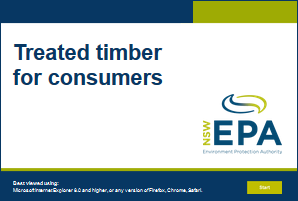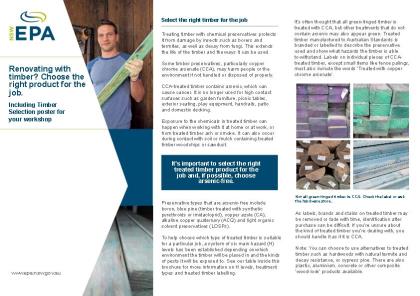Timber is treated with pesticides to protect it from insects such as borers and termites, as well as fungi that cause rot and decay. These chemicals can potentially be a danger to you, your family, or the environment if they leach into the ground and contaminate soil or groundwater, so it is important to choose as safe a treated timber as possible for your building or renovation project and to use and dispose of treated timber safely and legally.
Most treated timber in Australia is softwood, usually plantation pine. Softwood grows more quickly and is cheaper to produce than hardwood but is not naturally resistant to pests. Treating softwood makes it more durable and versatile. Some hardwoods are also treated.
Treated timber has many uses, including house and deck framing, flooring, building poles, interior and exterior joinery, cladding, garden furniture, trellises, pergolas, picnic tables, exterior seating, patios, decking, lattice, handrails, stairs, retaining walls, poles, stumps, fences and more. It can also be used in fresh water and marine environments.
This 8 minute video contains practical information for treated timber users.



